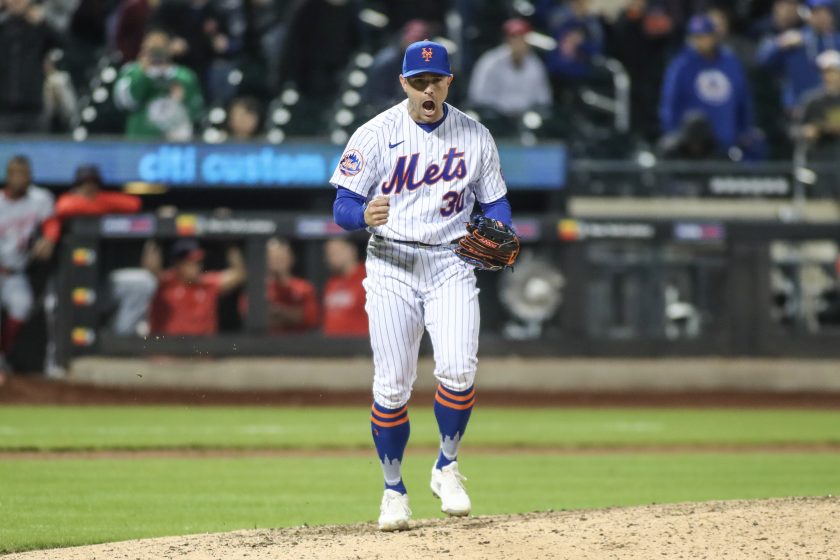3 keys to David Robertson’s incredible start out of Mets’ bullpen

Justin Verlander gave the Mets what they sorely needed on Wednesday night in Cincinnati: some length from the starting rotation. But once his night was done following seven strong innings, he put his trust in the bullpen. Specifically, it was Adam Ottavino in the eighth and then David Robertson in the ninth.
They strung together two shutout innings to secure a long-overdue win. Robertson remained perfect by registering his seventh save in seven tries. He initially signed to be Edwin Diaz’s set-up man, but he’s proven to be one of this past winter’s best free-agent acquisitions.
His 0.7 fWAR is among the league leaders for qualified relievers, and he’s paired it with a 0.59 ERA through his first 15.1 innings. This kind of start to Robertson’s season has put him in rare company in franchise history:
Here are the pitchers in #Mets history to post a sub-0.60 ERA & record 7+ saves in their first 14 games of a season:
John Franco: 1991, 1992, 1997
Billy Wagner: 2008
David Robertson: 2023@Metsmerized #LGM— Mathew Brownstein (@MBrownstein89) May 11, 2023
Below are three keys to his domination thus far.
Better control of the strike zone
At the moment, Robertson owns a 34.5% strikeout rate. While this would be his highest in a season since 2014 with the Yankees (37.1%), it’s not anything new from the hurler. His career strikeout rate is 32.1% and he’s finished with one better than 30.0% nine times in 14 seasons entering 2023.
What has changed is his control of the strike zone upon looking at his walk rate. Heading into 2022, Robertson had tossed just 18.2 innings between 2019 and 2021. In 63.2 innings for the Cubs and Phillies last year, he posted a 13.3% walk rate. At the moment, that number is down to 8.6%. With that, his WHIP has dropped from 1.16 to 0.85 and his strand rate has improved from 86.0% to 92.9%.
Dominating quality of contact
Even though David Robertson can rack up the strikeouts, it’s not like he’s pumping upper-90s fastballs out of the bullpen. The hardest pitch he throws is his cutter, which has an average velocity of 93.0 mph (his fastball has a 94.0 mph average, but he’s thrown it just 0.4% of the time in 2023).
So it’s crucial for him to be precise with his pitches in and around the strike zone. In 2022, Robertson produced a 46.5% ground-ball rate and a 40.3% fly-ball rate. Those numbers have gone in opposite directions this year (33.3% ground-ball rate and 50.0% fly-ball rate).
That’s typically not a good thing, but this increase in fly-ball rate is accompanied by a 20.0% infield-fly rate (it was 10.3% last year). He’s also dominated the quality of contact opposing hitters are making. His hard-hit rate has gone down from 26.2% to 25.0%, while his soft-hit rate has improved from 13.8% to 21.9%.
Improved results with cutter and slider
When looking at pitch usage, David Robertson mostly uses his cutter (52.9%), curveball (29.1%), and slider (15.2%). Opposing hitters produced a 123 wRC+ against his cutter and a 114 mark against his slider last year.
So far in 2023, those numbers are at 20 and -3, respectively. They’ve also come with improved control. His walk rate on cutters has gone from 18.0% to 11.5%, while his slider has gone from 14.6% to 0.0%.
Robertson’s curveball is still effective (opposing hitters have produced a 56 wRC+ against it). However, the improvements he’s made with the other two offerings have been a big reason why he’s been so good to start the season.
You can reach Matt Musico at matt.musico@xlmedia.com. You can follow him on Twitter: @mmusico8.
Matt Musico is an editor for ESNY. He’s been writing about baseball and the Mets for the past decade. His work has been featured on numberFire, MetsMerized Online, Bleacher Report, and Yahoo! Sports.






